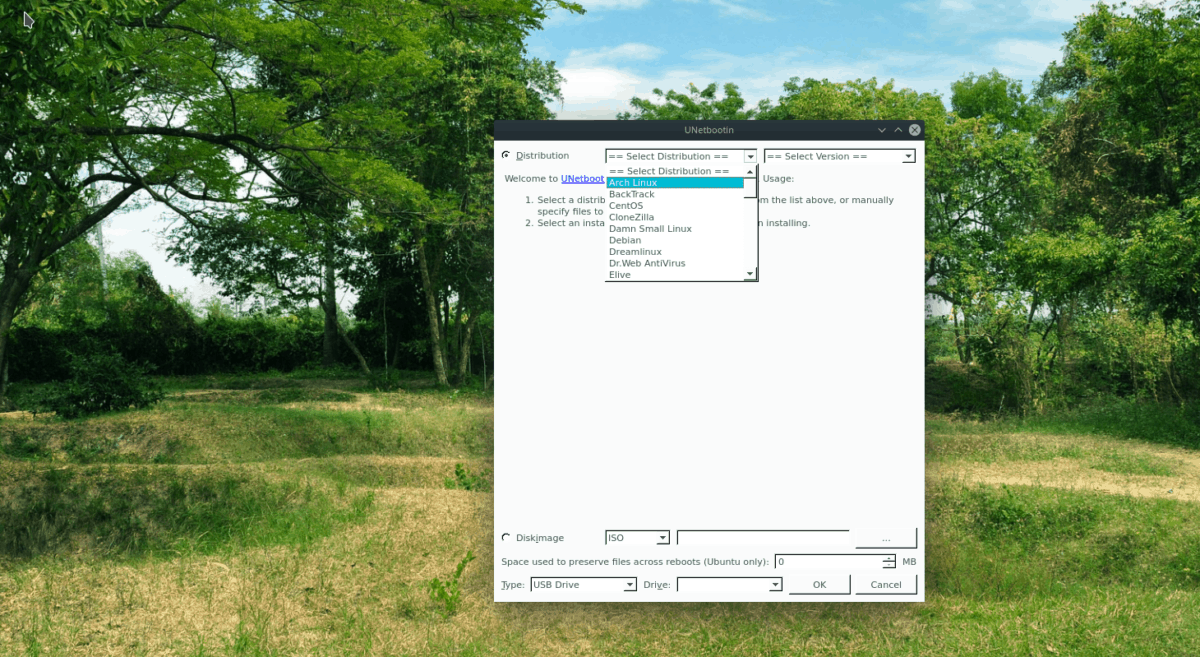
- #Unetbootin for mac install
- #Unetbootin for mac update
- #Unetbootin for mac iso
- #Unetbootin for mac zip
- #Unetbootin for mac download
#Unetbootin for mac download
You probably want to have unetbootin download FREEDOS for you. See the "Using" tab on the unetbootin web site for instructions. Use unetbootin to add FREEDOS to your USB.Instead, I suggest dragging the app to Applications so you will have it for future uses.
#Unetbootin for mac install
Note that although the downloaded file is a dmg file, it will not automatically install the app in Applications.

(Note: I'm using MacOS 10.13.4 - High Sierra on other versions of MacOS the menu choices may be different.) Give the drive a useful name like "InstallDrive". Select "Erase", and from the Erase window select FAT32 as the format. Insert the drive, select it from the left side of the DU window. Use the MacOS Disk Utility (Applications > Utilities > Disk Utility) to reformat a USB "thumb" drive.It's also a good idea to print out and read the Readme file located in the folder. Make a note of where the unzipped folder is located. Download the latest BIOS firmware from the Supermicro web site.Long story short, it took several hours to figure things out, but it worked in the end. But my experience with the BIOS should be helpful.
#Unetbootin for mac update
I still have to update the IPMI firmware and install FreeNAS.

Let me say at the outset that the Supermicro documentation is better than most, but it still leaves much to be desired. So I'm sharing my notes to help anyone who stumbles across this thread. But yesterday I successfully updated the BIOS on a Supermicro X11SSH-F motherboard. I'll do the BIOS update on the main server in a few days. Everything worked perfectly after that BIOS fiddling. I had to enter the BIOS setup, change the device type at the SATA port from "Hard Disk Drive" to "Solid State Drive", go to the "Boot -> Hard Disk Drive BBS Priorities" item, and put that drive at the top of the list, then put it in the #2 slot of the "Boot -> Set Device Priority" list (the first item is USB hard drive, to cover the case that I need to boot off a USB stick someday). The only issue after the BIOS update was my SSD boot drive was not detected. I selected the "Proceed with flash update" item, and watched the progress indicators as the BIOS was updated. I started the IMPI console, and it showed a BIOS screen on the Recovery page. My cheap USB key didn't have an indicator light, so I released the Ctrl and Home keys after 30 seconds, and shortly after I heard the two beeps that supposedly indicated the BIOS recovery had started. I held the Ctrl and Home keys, then selected "Power On Server" via the IPMI web view. I didn't hold out any hope that I could hold down two keys on the IPMI virtual keyboard, so I grabbed the USB keyboard from my Mac and plugged it into the server. Then you must press and hold the Ctrl and Home keys during startup, until you see the USB drive light flashing. This evening, I tried SuperMicro's BIOS Recovery procedure, which involves copying the BIOS file onto a USB stick, and naming it "SUPER.ROM". I consoled myself with a beer, and went to bed, very frustrated. Needless to say, the machine reset during the BIOS update, and that had the well known effect of turning the server into a brick. I selected "Set Power Reset" in the IPMI console "Power Control" menu, and was horrified a few nanoseconds later to see the BIOS update suddenly start churning away again. I pondered whether this was really the end of the BIOS update, and finally decided that it must have finished.

" message, then nothing happened for a long, long time. I watched on the IPMI console as the BIOS update proceeded. Yesterday evening, I finally got over the hump with the BIOS update, as described above. I'm sure the info I need is buried in this forum somewhere, but my Google-fu isn't strong enough to find it.
#Unetbootin for mac zip
That is way more than the size of the expanded BIOS zip archives. How large a USB stick do I need? I've got some ancient 64MB ones that I'd like to use for this, if possible. I've tried using diskutil partitionDisk /dev/disk3 MBR MS-DOS X10SL7F 0b at the CLI in macOS, but Disk Utility says the resulting USB stick is not bootable.
#Unetbootin for mac iso
How would I create a bootable USB stick using macOS 10.13? All the info I've found so far assumes you want to use an ISO to make a bootable USB stick, so they point to tools like UNetbootin. Do I need to add an OS such as FreeDOS, or are the contents of the BIOS zip from Supermicro all I need? I've downloaded the 3.0a BIOS for each of these boards, and if I understand the directions correctly, I "simply" need to copy the contents of the expanded zip files onto a bootable USB stick. I want to update the BIOS on my two servers with Supermicro boards (X10SRH-cF and X10SL7-F).


 0 kommentar(er)
0 kommentar(er)
